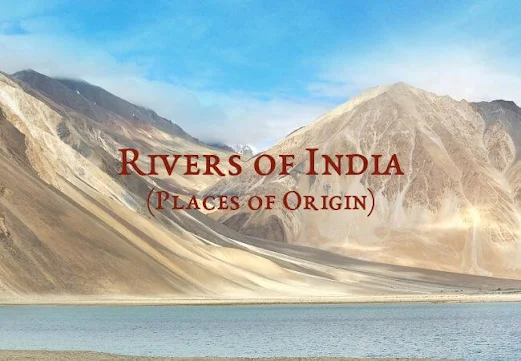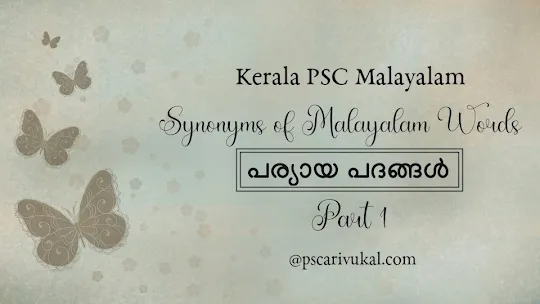There are more than 400 rivers that are flowing throughout peninsular India that play an important role in sustaining life and shaping the culture of the country.
Of the 400 rivers, the Government of India has classified 12 rivers as the major rivers in India. They are Ganga, Yamuna, Brahmaputra, Indus, Narmada, Beas, Sutlej, Mahanadi, Godavari, Krishna, Kaveri & Tapti.
The majority of India's river systems consist of east-flowing rivers, i.e. they flow from west to the east and empties into the Bay of Bengal.
But there are five major river systems that are west flowing, i.e. they flow from east to west, and finally drains out into the Arabian Sea.
Basic Facts
- Study of Rivers – Potamology.
- No.of Westflowing Rivers in India – 5.
- Luni, Mahi, Narmada, Sabarmati & Tapti.
- Largest River in India – Ganga (2525 km).
- Longest River in India – Ganga.
- National River of India – Ganga.
- Longest Perennial River of India – Ganga.
- River with Largest Basin in India – Ganga (861452 sq. km.).
- Third Largest River in the World.
- Second Longest River in India – Godavari (1465 km).
- Largest River in South India – Godavari.
- Largest Peninsular River System – Godavari.
- Largest West Flowing River in India – Narmada (1312 km).
- Deepest River Valley of India – Bhagirathi & Alaknanda.
- Fast Flowing River in India – Teesta.
- Widest River in India (Asia as well) – Brahmaputra (26 km).
- Indian River without Delta – Tapti River.
- Indian State with least no. of rivers – Nagaland.
- Union Territory without any river – Chandigarh.
- First Privatized River in India – Sheonath.
- Most Polluted River (Open Sewer) in India – Yamuna.
- Indian River that crosses the Tropic of Cancer Twice – Mahi.
- First Non-human Entities ("living entities") in India to be granted the same legal rights as people – Ganga & Yamuna (2017, by Uttarakhand).
Place of Origins of Important Rivers in India: List
| River | Place of Origin |
|---|---|
| Bharatapuzha | Anaimalai Hills, Western Ghats (Tamil Nadu) |
| Bhavani | Palghat Ranges (Kerala) |
| Beas | Beas Kund, Rohtang Pass (Himachal Pradesh) |
| Betwa | Vindhya Range (Madhya Pradesh) |
| Brahmaputra | Chemayungdung Glacier (Tibet) |
| Chaliyar | Elambaleri Hills, Western Ghats (Kerala) |
| Chambal | Vindhya Range (Madhya Pradesh) |
| Damodar | Chota Nagpur Plateau (Jharkhand) |
| Ganga | Gangotri Glaciers (Uttarakhand) |
| Godavari | Nasik (Maharashtra) |
| Gomti | Gomat Taal (Uttar Pradesh) |
| Indus | Mansarovar (Tibet) |
| Kaveri | Brahmagiri Hills (Karnataka) |
| Kosi | Himalayas (Nepal) |
| Krishna | Mahabaleshwar (Maharashtra) |
| Luni | Aravalli (Rajasthan Desert) |
| Mahi | Minda Village (Rajasthan) |
| Mahanadi | Sihawa, Raipur District (Chhatisgarh) |
| Narmada | Amarkantak Hills (Madhya Pradesh) |
| Pamba | Pulachimalai Hills (Kerala) |
| Penna | Nadikonda (Kolar, Karnataka) |
| Periyar | Sivagiri Hills, Western Ghats (Kerala) |
| Ravi | Chamba District (Himachal Pradesh) |
| Sabarmati | Udaipur, Aravalli Hills (Rajasthan) |
| Sutlej | Lake Rakshastal (Tibet) |
| Tapti | Multai (Madhya Pradesh) |
| Yamuna | Yamunotri (Uttarakhand) |
📝 Read More:
📝 SideNotes:
- Study of Inland Waters (Lakes, ponds etc) – Limnology.
- Study of Former Lakes – Paleolimnology.
- The Brahmaputra is often confusedly called the longest river in India. However, that is not true, because out of the 4,696 km, only (approx.) 916 km flows through India. The rest of it flows through Tibet (China) and Bangladesh.
- also known as
- Jomuna in Bangladesh, (Previous Year PSC Questions: Deputy Collector (SR for SC/ST), 2019)
- Yarlung Tsangpo in Tibet &
- Dihang in Arunachal Pradesh.
- Ganga also known as –
- Keertinasini in Bangladesh.
- Padma in Bangladesh.
- Langchen Khambab in Tibet – Sutlej.
- First River in the world to be granted Human Status – Whanganui River (New Zealand).
- Smallest Country in the World without a river – Vatican.
Thanks for reading!!!









Post a Comment
Post a Comment